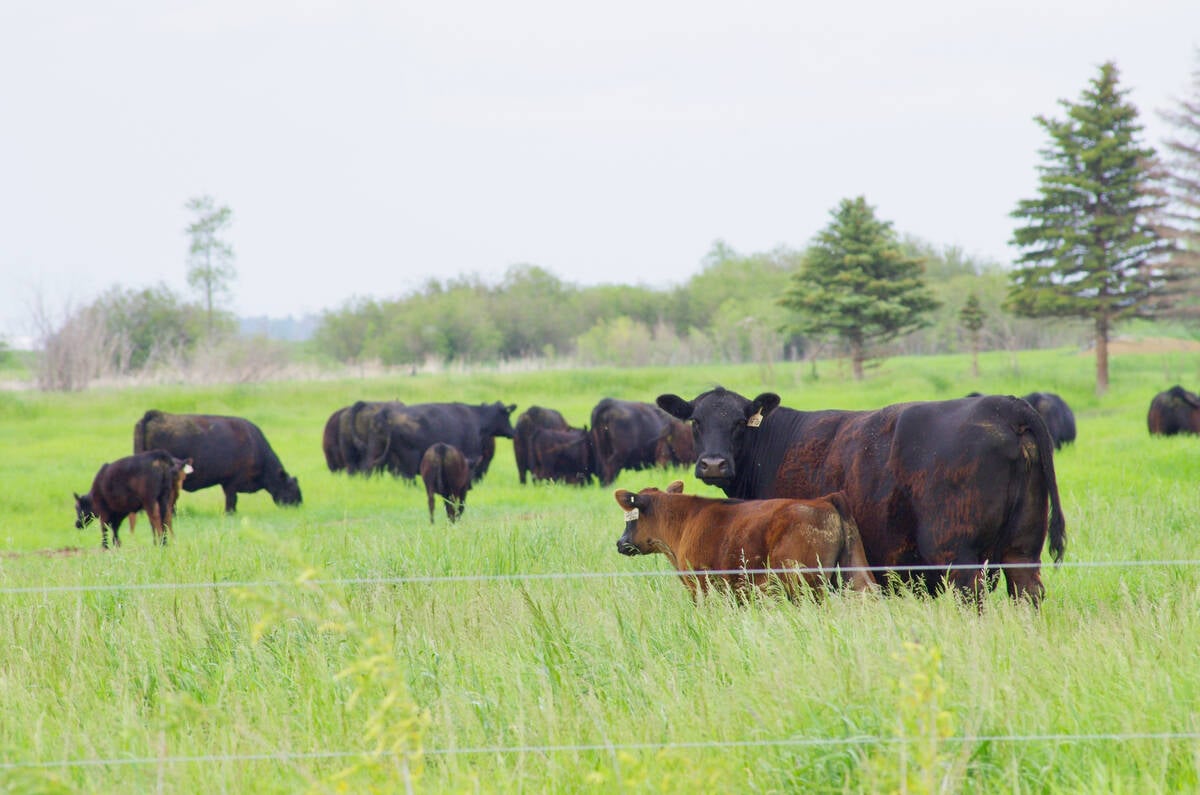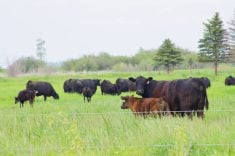CRESTOMERE, Alta. — Severe drought is testing Brian Luce’s intensive grazing program where this year’s grass growth is lagging a month behind.
“Management shows up in adverse conditions,” he said.
He and his wife Gail ranch on 2,000 acres near Crestomere in central Alberta.
Their ultimate goal is more grass production and continued soil fertility even during poor growing years. Extending the grazing season should also benefit his bottom line when it comes time to winter cows.
“I’m looking for ways to reduce costs and increase yield all the time. Otherwise, costs will catch up and overtake you,” he told a pasture tour group.
Read Also

Tick research from the University of Manitoba focuses on insects and testing
Manitoba researchers are looking into the effects of tick and fly disease in cattle.
After years of careful management, some of his pastures are returning to a state he finds acceptable. There is good ground cover with a variety of grasses and clover. When he walks across the land to move cattle, there is a springy feel to the soil.
This is a grey-wooded soil and he finds clover does well. He is looking for plant diversity that adds to the biomass of the pasture floor. While some may decide to use poorer land for pasture, Luce thinks it’s smarter to use good land because ultimately the pasture quality is better.
He used to swath graze but he has moved to the next generation of grazing.
“I didn’t find it to be very low cost,” he said. Most years he risked a wet June when the swaths should be seeded. Delays at seeding affected the finished crop.
His new plan allows flexibility to introduce changes in grass or cow management when conditions demand.
He has decided to calve in June so the calves are born on grass and stay with their mothers until February. The cows get good quality hay for extra energy as they continue to nurse the calves.
“The cheapest way to keep a calf is on the cow. A little bit of milk takes a lot of concentrate to replace,” he said.
Last year drought forced him to start feeding his cows in October when normally he can carry them on pasture until early December.
In addition to extended fall grazing, he stockpiles forage by letting the grasses grow till they fall over. That fallen-over effect provides protection and preserves the forage.
During lean years when he has run out of hay, he is thankful for that extra forage in the spring. He believes stockpiled grass carries more nutrient value than hay. It seems to hold sugar, making it palatable and offering more energy.
When all is going well during a peak grazing season, the grass in this country is so tall, it’s hard to see the steers as they eat their way through each paddock. Paddocks are generally rested for 90 days depending on the stand.
“We don’t graze for this year. We graze for next year.”
Water is delivered with a pipeline system.
He runs about 500 steers to the acre, which are followed by his cow-calf pairs and young heifers. With such a high stocking density, the cattle are forced to eat all the plants rather than graze selectively.
Luce does not want too much litter left behind because he believes it cuts back on forage productivity. During the lush period he moves cattle twice a day, but if necessary he will move them up to four times a day.
For this system to work, he wants docile cattle. Skittish, wild cattle are better off on a continuous grazing program.
“Stress will really affect the gain and health of your steers.”
At shipping time, he prefers to sell on the satellite, f.o.b. off the farm. When they leave, he wants to know who is handling the animals. Stress causes weight loss.
“Shrink will cost a lot of money.”

















